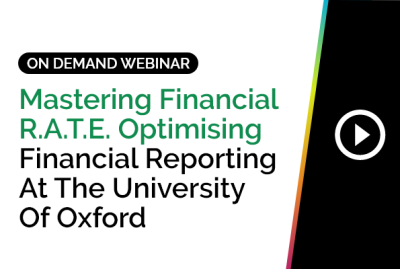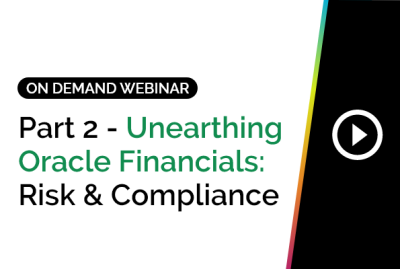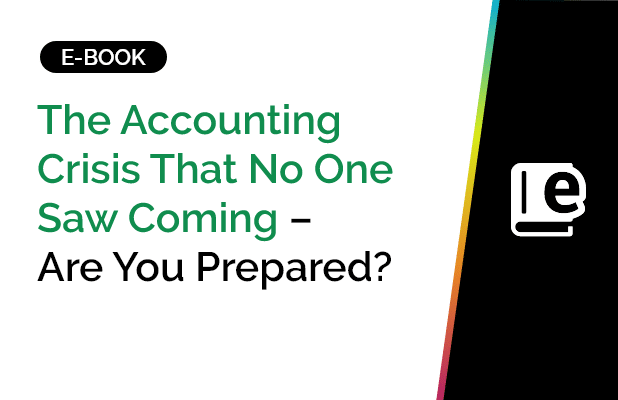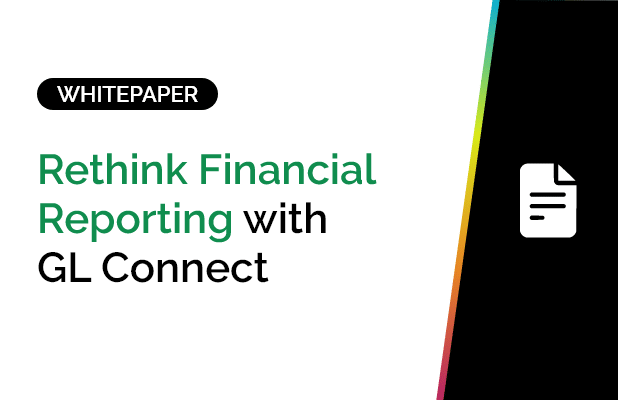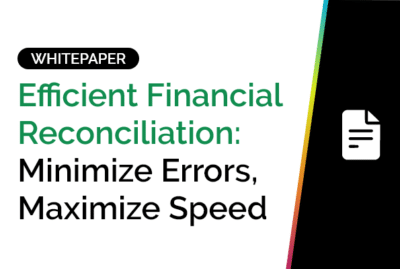- Blog Article
Why a Financial Data Analysis and Reporting System Is Critical for Modern Enterprises
Explore –
-
Why a Robust Financial Data Analysis and Reporting System?
-
What Is Financial Data Analysis and Reporting?
-
What Is a Financial Data Analysis and Reporting System?
-
Key Pain Points Enterprises Face in Financial Reporting and Analysis
-
Real-World Example: Financial Reporting Pain Points
-
What a Financial Data Analysis and Reporting System Can Really Do for Your Team
-
The Business Benefits of a Financial Data Analysis and Reporting System
-
What to Look for in a Financial Data Analysis and Reporting System
-
Is the Cost of a Financial Reporting System Justified?
-
The ROI of a Modern Financial Data Analysis and Reporting System
-
How to Implement a Financial Data Analysis and Reporting System
-
GLConnect: The Financial Data Analysis and Reporting System Built for Smart Finance Teams
-
Why Fortune 500 Finance Teams Trust GLConnect
-
Get Started with GLConnect: The Financial Data Analysis and Reporting System You Actually Need
In modern business, financial agility can make or break organizations. Yet, a staggering 76% of CFOs say they lack the agility to adjust plans quickly due to fragmented financial data.
The root cause?
Siloed systems.
Spreadsheet sprawl.
And outdated solutions that force finance teams to spend more time gathering data than analyzing it.
These pain points keep enterprise finance teams stuck in reactive mode. They are managing disconnected datasets across departments and systems, manually exporting reports, and relying heavily on IT to get even basic financial insights.
The result is a slow, error-prone process that delays decision-making, weakens forecasting, and undermines profitability.
This is exactly where a modern financial data analysis and reporting system comes as a life jacket.
Why a Robust Financial Data Analysis and Reporting System?
Unlike legacy solutions, a robust financial data analysis and reporting system combines financial reporting analytics with self-service and ERP integration to bring clarity, speed, and strategy back to finance. It goes beyond static reports and empowers teams with real-time data, powerful drill-downs, and self-service features – all within a user-friendly environment.
Whether you’re a CFO aiming for board-ready insights or an analyst chasing down a last-minute variance, the right financial reporting software tool eliminates bottlenecks and puts control back in your hands.
In this blog, we’ll explore how a next-generation financial data analysis and reporting system addresses enterprise pain points, delivers actionable insights, and why Fortune 500 companies are turning to solutions like GLConnect to unlock smarter, faster reporting.
What Is Financial Data Analysis and Reporting?
At its core, financial data analysis is the process of examining raw financial data to uncover patterns, trends, and insights that drive smarter business decisions. It goes beyond number-crunching. Financial data analysis is all about interpreting the financial story behind the numbers.
Financial reporting, on the other hand, is how this data is structured and communicated. It includes everything from balance sheets and P&L statements to real-time drill-down reports. When done right, financial reporting transforms raw data into actionable intelligence for enterprise decision makers.
But there’s a crucial distinction to make. Raw, static reports are not the same as financial reporting analytics. Traditional reports might show what happened. But financial reporting analytics digs into why it happened and what might happen next. It enables finance teams to compare actuals to budgets, analyze variances, model scenarios, and forecast with confidence.
This is where a financial data analysis and reporting system comes into play.
What Is a Financial Data Analysis and Reporting System?
A financial data analysis and reporting system is an integrated platform that streamlines how organizations gather, analyze, and report on financial data. Unlike traditional solutions that rely on static spreadsheets or manual exports, these systems centralize data- typically across cloud and on-premise systems. This way, they turn all raw financial data an enterprise owns into a single source of truth.
Modern financial data analysis and reporting systems combine the power of financial reporting software tools with modern drill down features and real-time analytics and reporting to eliminate bottlenecks.
Instead of waiting on IT, finance teams can self-serve. Instead of exporting data into endless spreadsheets, they can work with live data on a single Excel, apply filters, perform drill-downs, and create customized reports in minutes.
In short, a financial data analysis and reporting system enables:
- Centralized access to live financial data
- Built-in analytics for better insight
- Seamless workflows for efficient reporting
- Self-service reporting capabilities for finance teams
- Scalable architecture for enterprises managing multiple ledgers, entities, or geographies
A smart financial data analysis and reporting solution turns financial reporting processes from reactive to proactive.
Key Pain Points Enterprises Face in Financial Reporting and Analysis
Despite significant investments in enterprise technology, many finance teams still wrestle with outdated processes and disconnected solutions that slow down analysis and decision-making.
Here are the most common challenges a sound financial data analysis and reporting system can solve:
1. Manual Data Exports and Fragmented Systems
Finance teams often operate in silos. They pull data from ERPs, CRMs, spreadsheets, and BI solutions. This fragmented landscape forces analysts to manually export, reconcile, and reformat data just to create a single report. It’s time-consuming, error-prone, and inefficient.
2. Over-Reliance on IT for Custom Reporting
Need a new report or drill-down capability? That’s an IT ticket. Finance teams often wait days – sometimes weeks – for custom scripts or SQL queries. This dependence on IT slows down reporting cycles and stifles agility. A modern financial data analysis and reporting system puts that control back in the hands of the finance team.
3. Delays in Monthly Close and Board-Level Insights
Without automated workflows and real-time access, many enterprises struggle to close books on time or deliver board-ready insights. Executives are left making decisions based on outdated data – or worse, gut instinct. A lack of financial reporting analytics undermines strategic planning and forecasting.
4. Inability to Drill into Transaction-Level Data
High-level reports are only half the picture. When a variance appears, finance teams need to drill into the details – cost centres, journal entries, even subledger transactions. Without a robust financial reporting software tool, that level of visibility requires jumping across systems, wasting hours.
Real-World Example: Financial Reporting Pain Points
A Fortune 500 CFO recently shared a telling challenge with us: “When I see a red flag in our financials, I can’t get to the underlying data fast enough to act.” His team, relying on static, delayed reports, lacked the ability to drill into transaction-level details. This made same-day variance analysis and reconciliations nearly impossible. Strategic pivots were delayed, and cost-saving opportunities slipped through the cracks. This is precisely why forward-thinking finance teams are moving to comprehensive financial data analysis and reporting systems like GLConnect. With built-in drill-down functionality, GLConnect lets finance leaders go from summary to subledger in a single click—helping them investigate variances, identify root causes, and make timely, data-backed decisions. All without IT involvement.What a Financial Data Analysis and Reporting System Can Really Do for Your Team
A modern financial data analysis and reporting system is so much more than just a back-office utility. It’s a strategic tool that transforms how every persona in your organization interacts with financial data.
Unlike traditional solutions that provide static views, a robust financial reporting software tool delivers role-specific insights that drive smarter, faster decisions.
Here’s are some examples of different stakeholders benefit from a sound financial data analysis and reporting system:
CFO: Big-Picture Visibility with Real-Time Variance Analysis
Insight delivered: Variance analysis across business units, departments, and geographies.
Example: A global enterprise reduced its monthly close cycle from 8 days to 3 by enabling same-day variance tracking across its divisions – thanks to the real-time capabilities of a unified financial data analysis and reporting system.
CFOs can make faster, data-backed strategic decisions without waiting for static month-end reports.
Financial Controller: Transaction-Level Accuracy at Your Fingertips
Insight delivered: One-click drill-down into subledger transactions, journals, and GL balances.
Example: A financial controller used the drill-down features of a leading financial reporting software tool to identify a recurring misclassification in expense reporting, saving days of reconciliation.
Eliminate errors before they cascade, reduces audit risks, and ensures integrity in financial statements.
FP&A Analyst: Forecast vs. Actuals vs. Budget in One Place
Insight delivered: Consolidated dashboards with real-time refresh for actuals, budgets, and forecasts.
Example: An FP&A team cut their reforecasting cycle by 35% by using real time data refresh powered by a financial data analysis and reporting system – freeing up time for scenario modelling and strategic planning.
Reduce the manual effort of data gathering, improves agility, and allows FP&A teams to focus on high-value work.
Business Unit Leader: Line-of-Business Clarity on Demand
Insight delivered: Profit and loss visibility by product line, region, or cost centre.
Example: A business unit leader was instantly alerted about overspending in a regional cost centre via real time reporting. This allowed corrective action before month-end.
Give your business leaders timely, granular insight into their own operations without relying on central finance or IT.
With a powerful financial data analysis and reporting system, every user – from the CFO to operational heads – gets the insights they need, when they need them. This brings deep clarity into financial insights that drives confident decisions across the business.
The Business Benefits of a Financial Data Analysis and Reporting System
Implementing a financial data analysis and reporting system is more than just a technology upgrade. It’s a business transformation at play. A well-designed and well-implemented financial reporting software tool equips enterprises with the speed, clarity, and control needed to navigate modern business scenarios.
Here are the core benefits:
1. Faster, Smarter Decision-Making
With real-time data and built-in financial reporting analytics, business leaders no longer have to wait for manual reports. A modern financial data analysis and reporting system delivers timely, actionable insights that accelerate strategic decisions across departments.
2. Reduced Manual Effort and Spreadsheet Dependency
Manual spreadsheet wrangling leads to errors, version control issues, and wasted time. A centralized financial reporting software tool replaces static Excel files with dynamic, refreshable reports – still in Excel where your finance team feels most comfortable. This frees up valuable hours for analysis instead of administration.
3. Enhanced Accuracy Through Live ERP Connections
Direct integration with ERP systems like Oracle Fusion Cloud ERP & EBS ensures that data is always current and accurate. This eliminates the risks of outdated or mismatched numbers – a critical advantage for CFOs and finance teams focused on financial integrity and control.
4. More Autonomy for Finance Teams
Self-service functionality means finance professionals can create, customize, and share reports independently – no IT tickets, no SQL coding. A robust financial data analysis and reporting system empowers users to explore data, build models, and run ad hoc analysis, boosting team efficiency.
5. Better Compliance and Audit Readiness
With full drill-down capability, version histories, and automated data validation, audit trails are built in. This reduces the time and effort needed for compliance reporting, while ensuring every number can be traced back to its source.
A high-performance financial data analysis and reporting system is the right choice for finance teams striving for speed, precision, and control in a data-driven world.
What to Look for in a Financial Data Analysis and Reporting System
Not all financial solutions are created equal. If you’re evaluating a financial data analysis and reporting system, the right features can make the difference between static reporting and truly insightful financial reporting analytics.
Here’s what to prioritize when choosing a financial reporting software tool for your enterprise:
1. Direct ERP Integration
Your financial data analysis and reporting system should connect directly to core systems like Oracle Fusion Cloud ERP and Oracle EBS. This eliminates the need for manual data exports, ensures data accuracy, and delivers near real-time insights your team can trust.
2. Excel-Native Interface for Low Learning Curve
Finance teams already live in Excel. Your financial reporting software tool should too. An Excel-native interface or a user-friendly drag-and-drop UI allows teams to hit the ground running, with little to no training required.
3. Role-Based Access and Security Controls
Financial data is sensitive. A robust financial data analysis and reporting system must offer role-based access, permissions, and audit trails to protect confidential information and meet compliance standards.
4. Powerful Drill-Down Capabilities
Surface-level reports aren’t enough. Choose a solution with deep, transaction-level drill-down to subledger capabilities. This enables users to explore variances, investigate anomalies, and drive root-cause analysis – all without switching systems.
5. Multi-Format Report Outputs
Different stakeholders need different formats. A flexible financial reporting software tool should support Excel, PDF, HTML, and CSV outputs for seamless report sharing, board reporting, and system integrations.
6. Automation Features Your Finance Team Actually Needs
Look for time-saving features like report scheduling, bursting, and distribution. These enable finance teams to deliver timely insights with zero manual effort, turning your financial data analysis and reporting system into a true engine of productivity.
Choosing the right financial data analysis and reporting system is about more than checking boxes. It’s about empowering your finance team with intuitive, reliable, and secure solutions that scale with your business.
Is the Cost of a Financial Reporting System Justified?
For many businesses, investing in a financial data analysis and reporting system might seem like a significant upfront cost. But when compared to the ongoing expenses of legacy reporting processes, the ROI becomes clear – and compelling.
The Hidden Costs of Traditional Financial Reporting
Outdated systems rely heavily on IT for report creation, data extraction, and troubleshooting. Finance teams are stuck waiting for access, making do with manual workarounds, or battling spreadsheet chaos. These inefficiencies add up:
-
- Time lost waiting for IT support
- High risk of manual errors from spreadsheet-based reporting
- Delayed decisions due to outdated or siloed data
- Increased audit costs from lack of real-time traceability
Typically, finance teams spend up to 75% of their time collecting and validating data, leaving only 25% for actual analysis. Those are wasted hours that could be used to make the finance team a strategic asset to the business.
The ROI of a Modern Financial Data Analysis and Reporting System
A modern financial reporting software tool eliminates inefficiencies:
- Time savings through data consolidation across on-prem and cloud systems, live data refresh, and reusable templates
- Better decisions thanks to real-time access to accurate financial reporting analytics
- Cost savings by reducing reliance on external consultants or IT for report generation
- Audit readiness with built-in traceability and drill-down capabilities
Over time, a financial data analysis and reporting system pays for itself by enabling faster close cycles, fewer compliance issues, and a more empowered finance function.
Savvy businesses don’t think of financial data analysis and reporting systems as a cost. They think of it as a catalyst. The right financial reporting software tool transforms finance from a reactive function into a strategic force.
How to Implement a Financial Data Analysis and Reporting System
Adopting a modern financial data analysis and reporting system is not just about software. It’s about enabling smarter, faster financial reporting analytics across the enterprise.
To ensure a smooth and effective rollout, follow these five steps:
Step 1: Assess Your Financial Reporting Needs
Start by evaluating your current financial reporting workflows. Identify pain points – manual consolidations, slow close cycles, limited drill-downs – and define what you want your future financial data analysis and reporting system to solve.
Key questions:
- What reports are most business-critical?
- Where are we losing time?
- Who needs access to financial reporting analytics?
Step 2: Choose the Right Vendor
Not all solutions are created equal. Look for a financial reporting software tool that:
- Works natively within Excel or offers a minimal learning curve
- Integrates directly with your ERP (e.g., Oracle Fusion Cloud or EBS)
- Supports drill-downs, security controls, and flexible report formats
- Enables true self-service financial reporting analytics
Step 3: Pilot and Integrate
Before full deployment, run a pilot with key reports. Integrate the system with your ERP and test real-time data connectivity, drill-down accuracy, and performance under load.
Ensure the financial data analysis and reporting system aligns with both IT governance and finance team workflows.
Step 4: Train Your Finance Team
Even the best financial reporting software tool won’t drive results without adoption. Offer hands-on training focused on building, modifying, and analyzing reports. Highlight how the new system reduces their dependency on IT and empowers faster analysis.
Step 5: Monitor, Optimize, and Evolve
Once implemented, monitor adoption rates and reporting usage. Collect feedback from stakeholders and continuously optimize reports for clarity, relevance, and timeliness.
Your financial data analysis and reporting system should evolve with your business – supporting new metrics, business lines, and compliance needs as they arise.
When executed correctly, implementing a financial data analysis and reporting system transforms finance from reactive number crunchers into proactive strategic partners.
GLConnect: The Financial Data Analysis and Reporting System Built for Smart Finance Teams
Enterprise finance teams today don’t need one more software to handle. They need a financial data analysis and reporting system that actually fits the way they work. GLConnect by SplashBI is that system. It’s an Excel-native, self-service financial reporting software tool that connects directly to Oracle Fusion Cloud ERP & EBS, empowering CFOs, Controllers, and FP&A teams to move faster, with greater clarity and control. Here’s how GLConnect directly addresses the pain points of modern finance roles: For CFOs: Enterprise Visibility Without the Lag- Challenge: Disconnected systems and stale reports delay variance analysis and strategic decisions.
- GLConnect Solution: Live ERP data with one-click refresh enables real-time variance and trend analysis across business units.
- Result: Monthly close cycles shrink. Decision-making accelerates.
- Challenge: Manual data exports and IT reliance for subledger-level insight.
- GLConnect Solution: Built-in drill-downs from summary to transaction detail inside Excel.
- Result: Controllers can quickly investigate anomalies or reconcile data – no IT tickets required.
- Challenge: Siloed actuals, budget, and forecast data.
- GLConnect Solution: Dynamic dashboards pull in real-time ERP data across cloud and on-premise systems.
- Result: Forecasting becomes a proactive, continuous process.
- Custom Hierarchies: Report by cost center, region, or business line with precision.
- Seamless Report Distribution: Schedule and share reports effortlessly across stakeholders.
- Role-Based Access: Maintain control over who sees what – no manual gatekeeping needed.
Why Fortune 500 Finance Teams Trust GLConnect
GLConnect is a financial reporting software tool used by leading enterprises. All because it’s built for scale, speed, and accuracy – with native Oracle ERP integration and enterprise-grade performance.
Unlike traditional solutions, GLConnect reduces IT dependency, cuts manual errors, and empowers finance teams with true financial reporting analytics inside the tool they already know: Excel.
Click here to know more about why Fortune 500 companies choose, adopt, and love GLConnect.
Get Started with GLConnect: The Financial Data Analysis and Reporting System You Actually Need
- Real-time ERP-connected reporting
- Built-in security, scalability and flexibility
- Lower licensing costs
- Better customer support
- Expanded capabilities beyond financial reporting
- Seamless transition & implementation support
FAQs: Understanding a Financial Data Analysis and Reporting System
What is a financial data analysis and reporting system?
Can financial data analysis tools replace IT-supported reporting?
Is Excel still relevant with solutions like GLConnect?
Absolutely. Excel remains the preferred tool for finance teams – 80% of them continue to use it. Solutions like GLConnect enhance its power by adding live ERP data, self-service features, and financial analytics. You get enterprise-grade capabilities in an interface your team already knows.




